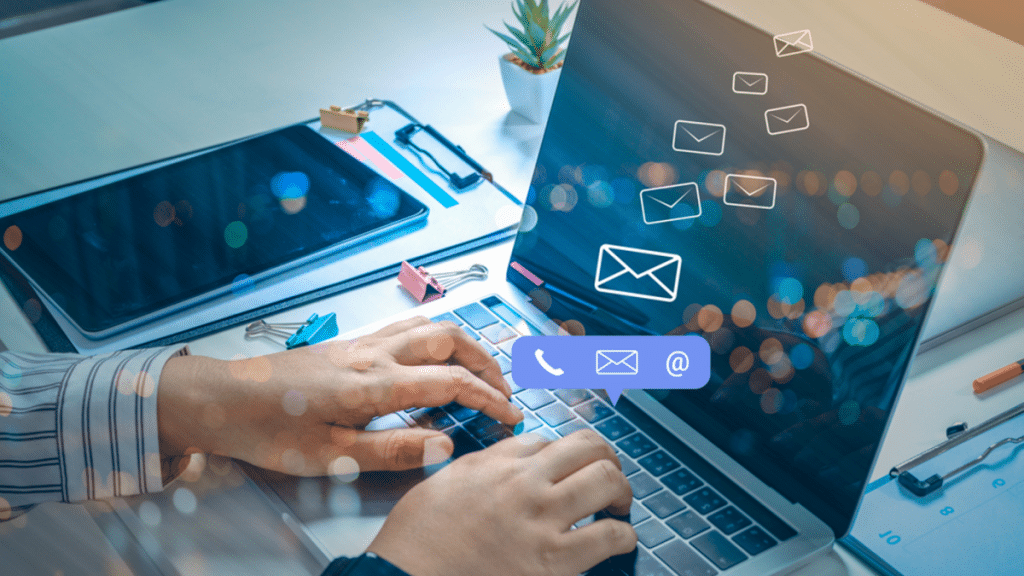In the competitive world of ecommerce, standing out can be a daunting task. Businesses need to employ smart, effective strategies to capture and retain customers.
One of the most powerful tools in an ecommerce marketer’s toolkit is email marketing. This blog delves into what ecommerce email marketing is, why it’s essential, and ten proven strategies to elevate your email campaigns.
What is Ecommerce Email Marketing?
Ecommerce email marketing involves using email to promote products, nurture customer relationships, and drive sales. It’s a direct line to your audience, allowing personalised communication that can significantly impact purchasing decisions. Unlike social media or paid ads, email marketing provides a more intimate and controlled environment to deliver your message.
Why Should Ecommerce Businesses Use Email Marketing?
Email marketing is crucial for ecommerce businesses for several reasons. Let’s explore some of these below.
- Direct Communication: Emails land directly in the customer’s inbox, providing a direct channel of communication. This makes it more immediate than more traditional forms of marketing.
- Cost-Effective: Email marketing is one of the most affordable marketing strategies with a high return on investment (ROI). This makes it a worthwhile investment for your ecommerce business.
- Personalisation: Email marketing allows you to personalise messages to your subscribers. For example, you can tailor messages based on customer behaviour and preferences. This helps to make them feel valued, and entice them to your store.
- Automation: Modern tools like Klaviyo allow for automated email marketing campaigns. This saves you valuable time, whilst maintaining effectiveness.
- Metrics: Email marketing enables you to track and analyse metrics like open-rates, click-through rates and engagement. This helps you to refine your strategy and tweak future emails for better results.
10 Strategies for Effective Ecommerce Email Marketing
Welcome Email Series
A welcome email series is your first impression on new subscribers. Start with a warm welcome, introduce your brand, and offer an incentive like a discount to encourage their first purchase. This series can include multiple emails spread over a week, gradually introducing your products and values.
Personalise Your Emails
Personalisation goes beyond addressing the customer by their first name. Use data to recommend products based on past purchases or browsing history. Personalised emails show customers that you understand their needs, increasing the likelihood of engagement and conversion.
Split Testing
Split testing, or A/B testing, involves sending two variations of an email to see which performs better. Test different subject lines, email content, images, and call-to-action buttons. Analyse the results to understand what resonates with your audience, then refine your future emails accordingly.
Abandoned Cart Emails
Abandoned cart emails remind customers of items they left in their shopping carts. These emails can significantly recover lost sales. Include images of the items, a clear call to action, and possibly an incentive like a discount to entice customers to complete their purchase.
Back in Stock Notifications
Notify customers when previously out-of-stock items are available again. These emails not only drive sales but also keep your brand top-of-mind for customers waiting for specific products. Include a direct link to the product page to make the purchase process seamless.
Seasonal Promotions
Capitalise on holidays and special occasions with seasonal promotions. Craft themed emails that highlight relevant products and offer special discounts. This approach can create urgency and boost sales during peak shopping periods.
Product Recommendations
Leverage the power of data to send personalised product recommendations to your customers. Through analysing their past purchases, browsing history, and preferences, you can curate tailored product suggestions that cater to their specific interests.
Product recommendation emails not only enhance the customer experience by showing them items they are likely to be interested in but also drive additional sales by promoting complementary or related products. This strategy not only increases the average order value but also strengthens customer loyalty by demonstrating that you understand and cater to their unique preferences.
Reward Loyal Customers
Show appreciation to your loyal customers with exclusive offers, early access to sales, or a loyalty program. These gestures foster a sense of belonging and encourage repeat purchases. Personalise these rewards to make customers feel truly valued.
Leverage Automation
Automation tools like Klaviyo can streamline your email marketing efforts. They allow you to set up automated workflows for welcome series, abandoned cart reminders, and post-purchase follow-ups. Automation ensures consistency and frees up time for more strategic tasks. To get the most out of your email automation, you can work with a Klaviyo email marketing agency.
Track Results and Refine
Regularly track key metrics like open rates, click-through rates, and conversion rates. Use this data to understand what works and what doesn’t. Continuously refine your strategies based on these insights to improve your campaigns’ effectiveness over time.
Summing Up
Ecommerce email marketing is a tool for driving sales and building lasting customer relationships. By implementing these strategies, you can create compelling email campaigns that resonate with your audience and boost your bottom line. Embrace the power of email marketing to transform your ecommerce business and achieve sustained growth.
